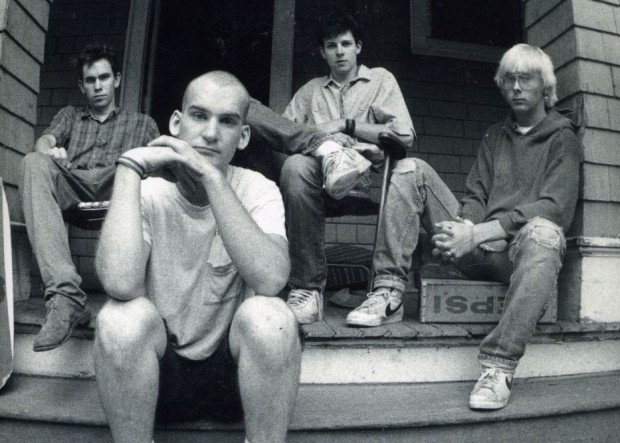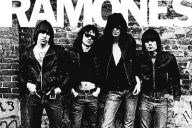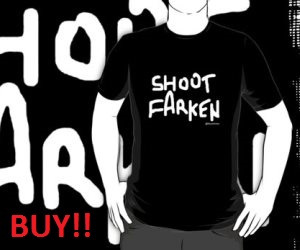How’s your drive-time commute? Enjoying pushing the pedal to the metal as “Life in the Fast Lane” oozes its pus fueled mediocrity through your Clarion speakers? Still jerking off to that Chiko Roll billboard? Did you ever stop to think about the surroundings that symbolise your life? A tad mediocre? Come on man, don’t be a wanker. Dig this.
Legend, joker and toker Steve Miller recently erupted at the Rock and Roll Hall of Fame with a speech filled with both vitriol and poignant accuracy. He blasted the Hall of Fame at a press conference backstage.
“This whole industry fucking sucks and this little get together you guys have here is kind of like a private boys club and it’s kind of a bunch of jackasses and fucking gangsters and crooks who’ve fucking stolen everything from a fucking artist, telling the artist to come out here and tap dance. They need to respect the artists, which they don’t.”
Of course, he is correct. Fifty years in the industry makes him so. Hearing the Eagles on the fucking radio every hour, 40 years after their pathetic demise tells us so. It’s obvious.
Luckily, out of mediocrity, out of despair, through sheer spite, anger and backlash, come very bloody good things.
Without racist bigots there would be no Martin Luther King Jr. or Malcom X, without oppressive regimes there would be no alternatives such as Communism, Socialism or Anarchy and without the fucking Eagles there would be no eclectic mix of amazing talented DIY musicians.
That’s right kids, thanks to nifty little apps like SoundCloud and Fruity Loops, DIY music is back in a big way.
The history of DIY music can be traced back through the ages, but for the purpose of this article let’s go back to the mid 1970s.
Death
Death was one of a handful of proto-punk bands from Detroit, Michigan who can be classed as the first punk rock band to record and release their music without any professional outside help. They spent their own time self-promoting in record stores, venues and by playing regular basement shows. Although less well-known than their more famous counterparts, this style of promotion saw Death carve out their own little niche in rock history.
Death cut a swathe for other DIY punk bands of the 70s in the States and across the Atlantic.
If you want to know more about Death, then check out the doco A Band Called Death on the story of the Hackney brothers and how the discovery of their long-lost demo tape led to their band’s newfound popularity; aka the sort of popularity that comes with the obligatory appearance in the annual Mojo magazine punk special free release CD.
Minor Threat
Fast forward to 1980. Washington DC. Hardcore straight-edge band Minor Threat (pictured). Frontman Ian MacKaye took the DIY ethic one step further. He started his own record label, Dischord, which still exists to this day. Think about this, that is no mean feat. On a seriously limited punk-squat budget, MacKaye managed to start his own label and keep it going for nearly four decades all while having to compete with the complete corporate bastardization of the ever crass music industry. He has also kept his vow to never sell a record for more than $10 in the United States. Look on any Dischord record cover; the words “pay no more than $10” stand proud on every album sleeve.
Later, MacKaye went on to greater success with post hardcore supergroup Fugazi, all while DIYing every single release.
This paved the way for great acts like Rites of Spring, The Teen Idles, F.Y.P. (Five Year Plan) and even Neil Young who got jack from the industry and began his own DIY setup in the 90s.
Entire movements took shape through DIY music too. In the late 80s, the Riot Grrrl movement went balls out ballistic. Acts such as Bikini Kill and Huggy Bear took to both stage and record with their “feminazi” hardcore style, completely independent of corporate promoters and major labels.
Think of Russian anti-Putinists Pussy Riot. They are known worldwide thanks to social media outlets such as YouTube and Twitter; the modern DIY approach. Without the Riot Grrrl movement, I don’t believe Pussy Riot would have a platform today.
Throughout the 90s lo-fi style home recordings became very popular. Artists like Sebadoh, Daniel Johnson and Half Japanese recorded irreverently quirky and challenging music that is, to be honest, of a seriously acquired taste. Brilliant nonetheless, and all recorded and released independently.
In the 2000s the laptop computer took over. Home recordings became more sophisticated thanks to programs such as Pro Tools. This allowed the artist to have an entire recording studio at their fingertips.
Through this, a new avant-garde pop scene was born, ground zero being Brooklyn, NYC. Ariel Pink’s Haunted Graffiti, Animal Collective, Panda Bear and Grizzly Bear were just some of the acts to take advantage of the technological age, by-passing all the corporate bullshit at the same time.
Current examples of DIY from New Zealand and Chile
Now it’s 2016 and a new DIY age is upon us. The aforementioned SoundCloud gives DIY artists an incredible platform to release their music. At the click of a button, an artist can have his or her finished piece on the world wide web for all to see and hear immediately, for free. There is even scope for accompanying artwork on the app. The complete package.
Going by the name Mezzaic, Aaron Birkin is one fine example of the successful utilisation of SoundCloud.
To put it bluntly, he is a fucking genius. Making the decision to make his own music whilst bored and holed-up in a quiet Japanese country town, Kiwi-born Birkin set about finding the right tools to do so.
Enter Fruity Loops. FL Studio (Fruity Loops) is what’s known as a DAW (Digital Audio Workstation). Created in Belgium by company Image Line, the program operates with a graphical user interface which is based on a pattern-based music sequencer. Thanks Wikipedia.
This sounds complicated, but it’s not. It’s dead easy. All you need is some musical nous, a creative mind and a laptop.
Mezzaic’s (the name derives from the term mosaic, a style that Birkin feels describes his music to a T) influences are from far and wide and include musicians, artists and film directors that “do things differently from the norm.”
“I feel that mainstream entertainment and mainstream news is highly controlled and organised to instill certain ideas into the populace, which in effect means that a lot of people are completely oblivious to the truth of certain news stories and stops them from thinking for themselves. Therefore, I feel it is very important for bands, artists and film directors to challenge these conventions and show people that the truth is hiding in plain sight.”
Deeply immersed in Japanese culture, Birkin’s main influence is Japanese progressive metal band Dir En Grey whose contents of songs include political and social issues such as abortion, the Fukushima disaster and of course, love.
Aural Vampire, Nails, Bad Religion, Deftones, Jurassic 5, Hail Mary Mallon and a variety of KPop bands (Korean Pop) are among his many other musical influences. Japanese movie directors such as Takashi Miiki and Shinya Tsukamoto also influence his experimental cut-up style.
Mezzaic is unique in that he deliberately records his music for earphones only. He does this by taking his recorded music from his old Toshiba laptop and transferring it to iPod to check the sound levels and channels. Using his $29 Sennheiser headphones, he then makes sure he is happy with the final product. Job done.
Birkin’s regard of the New Zealand DIY scene is that of a familiar tale; hardcore, metal and punk. He is a big fan of the scene as the music is usually of excellent quality, cheap and accessible, and when you go the shows, it is easy to meet the bands and have a chat. The community aspect is key.
In Santiago, Chile lives a brooding, humble aeroplane mechanic and pilot from Argentina named Juan Pablo Vigano Donnet. Upon meeting him, I was treated to a whisky, some pizza and a blistering solo rendition of Nirvana’s “School”. Juan Pablo is also a keen DIY musician. His influences are vastly different to that of Mezzaic’s. Syd Barrett, Tame Impala, Pink Floyd, Led Zeppelin and the Beatles take centre stage in his life. His songs are instrumental and they are sweeping and long. You could almost call them brooding soundscapes.
Juan Pablo also uses SoundCloud to distribute his music and make a name for himself, although he uses much more traditional methods to get the job done. A series of effects pedals, an electric guitar and a drum machine straight into an effects mike and onto his laptop. And the results are marvellous. Whimsical, Barrettesque soundscapes littered with psychedelia and wonder. Marijuana and wine make a great accompaniment.
Donnet regards the Chilean and Argentinian DIY scene as far more insular than most. Just a hell of a lot of artists playing in their bedrooms and releasing great music on SoundCloud.
“There isn’t really much of a live scene.”
Steve Miller made many valid points in his Hall of Fame rant: Yes, the Eagles suck, but with artists like Mezzaic and Juan Pablo and a swag of other quality DIY artists around the world, music is in excellent and capable hands.
The industry on the other hand…
If you enjoy the work of Ben Munday and getting off the beaten track, then make sure check out his exciting new travel website, The Low Road.
















